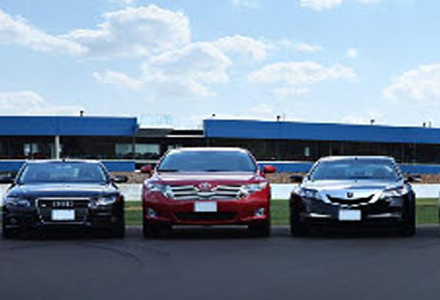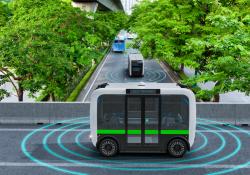
Connected Vehicle Cooperative Safety Systems use 5.9 GHz Dedicated Short Range Communications (DSRC) to enable vehicle active safety systems which may help drivers avoid crashes. 5386 The United States Department of Transportation (US DOT) has partnered with the Crash Avoidance Metrics Partnership (CAMP) Vehicle Safety Communications 3 (VSC3) Consortium to research, develop and test the technologies that form the framework for these systems. The CAMP VSC3 Consortium consists of:
Under the Connected Vehicle Safety Pilot Program, vehicles from each of these manufacturers will support one or more of the following safety applications: Emergency Electronic Brake Lights (EEBL), Forward Collision Warning (FCW), Blind Spot Warning / Lane Change Warning (BSW / LCW), Do Not Pass Warning (DNPW), Intersection Movement Assist (IMA) and Left Turn Assist (LTA)
These safety applications will be demonstrated at the 22nd ITS America Annual Meeting and Exposition. Participants will ride in the vehicles and experience the effectiveness of the safety applications in various potential crash scenarios. The vehicles used will be part of the actual test fleet that will participate in the U.S.DOT Safety Pilot Program. The objective of the demonstration is to show how V2V interoperability among vehicles from different automotive manufacturers can allow cars to communicate and understand each other. These connected vehicle safety systems may help drivers avoid crashes regardless of vehicle make, model or type.
For additional information regarding this event, including demonstration details and registration, please visit:External 0 0 0 oLinkExternal www.v2vtechreview-washingtondc.com Register false http://www.v2vtechreview-washingtondc.com/ false false %>
- The Ford Motor Company,
- General Motors,
- Honda R&D Americas,
- Hyundai-Kia America Technical Center,
- Mercedes-Benz Research and Development North America,
- Nissan Technical Center North America,
- Toyota Motor Engineering & Manufacturing North America,
- Volkswagen Group of America.
Under the Connected Vehicle Safety Pilot Program, vehicles from each of these manufacturers will support one or more of the following safety applications: Emergency Electronic Brake Lights (EEBL), Forward Collision Warning (FCW), Blind Spot Warning / Lane Change Warning (BSW / LCW), Do Not Pass Warning (DNPW), Intersection Movement Assist (IMA) and Left Turn Assist (LTA)
These safety applications will be demonstrated at the 22nd ITS America Annual Meeting and Exposition. Participants will ride in the vehicles and experience the effectiveness of the safety applications in various potential crash scenarios. The vehicles used will be part of the actual test fleet that will participate in the U.S.DOT Safety Pilot Program. The objective of the demonstration is to show how V2V interoperability among vehicles from different automotive manufacturers can allow cars to communicate and understand each other. These connected vehicle safety systems may help drivers avoid crashes regardless of vehicle make, model or type.
For additional information regarding this event, including demonstration details and registration, please visit:





